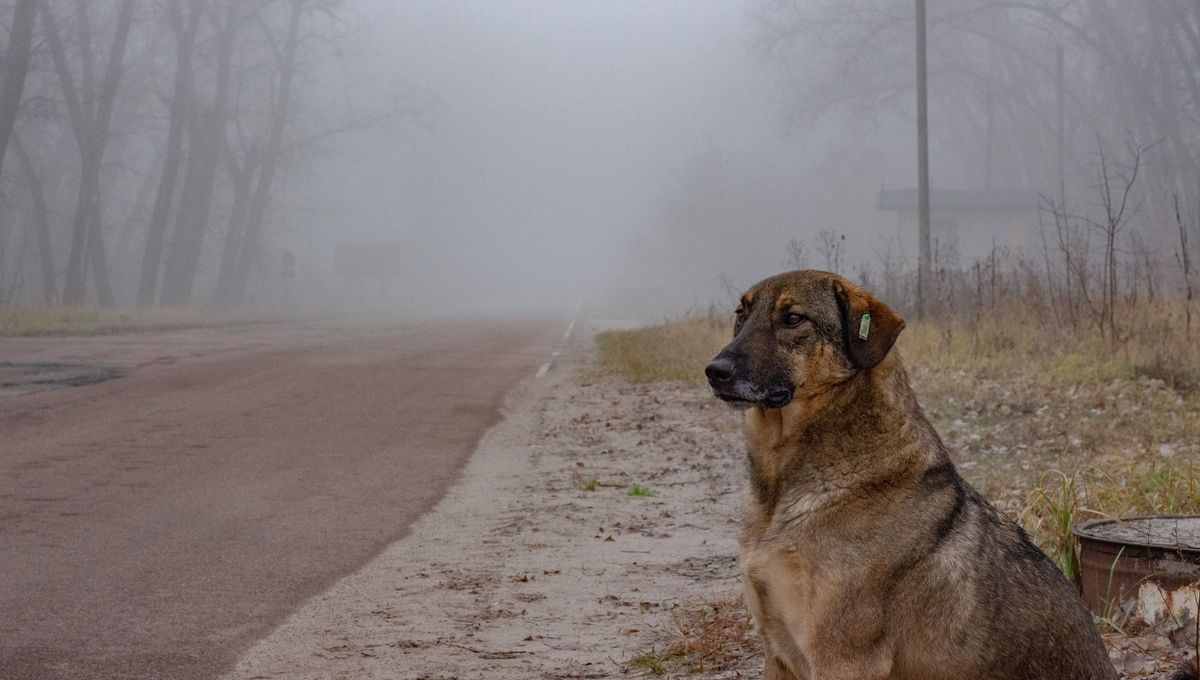
In the shadow of the worst nuclear disaster in history, a population of dogs in Chernobyl, Ukraine, have become genetically different from canines in the rest of the world. The reasons for this have always been something of a mystery, but things just got even more perplexing as new research reveals that increased mutation likely wasn’t a factor in the poochs’ speedy evolution.
The Chernobyl nuclear disaster on April 26, 1986, resulted in the world’s largest release of radioactive nuclides, and significantly elevated levels of other toxic contaminants including lead, arsenic, and asbestos. In the wake of the disaster, around 120,000 people living in the surrounding area were forced to evacuate and abandon their homes.
As a result, many dogs were left to fend for themselves in the irradiated land surrounding the former power plant and, against all odds, managed to establish a sturdy population that still exists today. According to recent estimates, as many as 800 semi-feral dogs are currently living around Chernobyl, including in some of the most contaminated areas.
These dogs have undergone rapid evolution in the years since the disaster, becoming genetically distinct from other dogs elsewhere in the world, the latest research has revealed. So changed is their DNA profile that it is possible to tell who these dogs are just by looking at it, which researchers believe is a reflection of the environmental contamination they’ve been exposed to for generations.
Dogs aren’t the only species affected by the harsh environment of Chernobyl. Songbirds in the Exclusion Zone (CEZ) have distinct gut microbiomes, for example, meanwhile, tree frogs have changed color and wolves have evolved an altered immune system.
Why is this happening? Increased mutation has previously been identified as a possible driver of this genetic differentiation in Chernobyl’s dogs, but, according to the new study, it appears this is not the culprit.
Researchers assessed the mutation rate and accumulated mutations in two established populations of dogs within the CEZ – one living at the power plant and the other in Chernobyl city – finding no evidence that these are the driving force behind the differentiation.
The study supports previous findings that free-breeding dogs at the nuclear plant are genetically distinct from those just 16 kilometers (10 miles) away in Chernobyl city, as well as from canine populations outside the CEZ. However, it did not find evidence of an increased DNA mutation rate or increased mutation accumulation between the plant and city populations.
“With this study, we do not find evidence of an increased mutation rate for the Nuclear Power Plant population of dogs through chromosomal aberrations, increased microsatellite diversity, or an increase of more recently derived alleles. Therefore, mutation does not appear to be the cause of the previously identified genetic differentiation between these two geographically close populations of free-breeding dogs,” the researchers conclude.
The true cause of this genetic diversity therefore remains unknown, although the team has uncovered some evidence to suggest that directional selection may be playing a part. Further investigation will be needed to confirm this.
In the meantime, the dogs at Chernobyl present a unique opportunity to study the genetic effects of radiation and may help inform research in other species, including our own. “[They] may serve as effective sentinels for human health effects arising from toxic environmental exposures”, the study authors explain. “Thus, Chornobyl dogs present a unique and valuable resource as models for human mutation studies.”
The study is published in PLOS One.
Source Link: Chernobyl’s Dogs Are Genetically Different – But Increased Mutation Isn’t To Blame